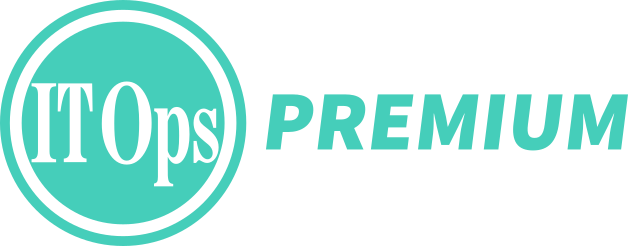
The growing complexity of modern software development and operations—which includes Kubernetes —is fueling the rise in popularity of platform engineering. As DevOps reaches its limits for managing fragmented toolchains, complex workflows, and sprawling cloud environments, platform engineering helps bring order to the chaos through scalable, self-service infrastructure and standardized developer experiences, with Kubernetes often at the core.
Today, four innovations are driving the next phase of platform engineering’s evolution: AI-powered internal developer platforms (IDPs), Golden Paths, AIOps for Kubernetes, and a platform-as-product mindset. These aren’t isolated trends—they’re interlocking pillars that help organizations accelerate delivery while maintaining security, governance, and resilience at scale.
AI-Powered IDPs Simplify Complexity
While Kubernetes isn’t an IDP on its own, it’s the foundational layer upon which most robust IDPs are built. That’s because it’s a platform for building platforms and many IDP components run on Kubernetes. Even though Kubernetes is powerful, it’s far from developer-friendly out of the box. Engineers must navigate YAML, Helm charts, role based access control, and CI/CD pipelines—layers of abstraction that IDPs aim to simplify by offering a unified interface for easily provisioning services, deploying workloads, and accessing the tools developers need.
Modern IDPs like Backstage (open source) and Port (SaaS) are becoming central interfaces between developers and Kubernetes infrastructure. These platforms consolidate service catalogs, CI/CD pipelines, observability tools, and API gateways into a coherent experience. But equally important, they’re being enhanced with AI-powered capabilities.
AI can augment developer platforms in several ways: intelligent search that understands context, conversational interfaces that guide engineers through troubleshooting, or recommendation engines that suggest deployment patterns based on prior usage. For example, an AI assistant in an IDP can help a developer understand why a recent deployment failed, pointing to logs and tracing data without requiring a context switch to Grafana or Datadog.
By minimizing cognitive load and automating repetitive decisions, IDPs don’t just streamline development—they fundamentally improve how developers interact with Kubernetes environments.
Golden Paths Codifying Operational Excellence
Even with a well-designed internal developer platform (IDP), complexity and drift are inevitable at scale. Developers will still make mistakes, and over time, inconsistencies creep in across environments, teams, and services. That’s why organizations rely on Golden Paths—predefined, opinionated workflows for common development tasks, like deploying a microservice, setting up CI/CD pipelines, or provisioning infrastructure. These workflows encapsulate best practices, compliance requirements, and architectural standards, allowing developers to move fast without sacrificing quality.
For example, a Golden Path for a new service might include:
- A standardized GitHub repository scaffold
- Kubernetes deployment manifests with sensible defaults
- Integrated observability and alerting templates
- Role-based access control policies
- Hooks into CI/CD pipelines and promotion workflows
These templates can be delivered through the IDP and triggered via a self-service UI. Once in place, Golden Paths reduce the need for one-off platform requests and ensure consistent implementation of standards across the organization.
But even these aren’t foolproof.
Looking forward, AI has the potential to elevate Golden Paths beyond static templates. Usage analytics can identify bottlenecks or inefficiencies in workflows, while AI models can automatically update paths with the latest security patches or performance optimizations. A Golden Path isn’t a one-time artifact—it’s a living construct that should evolve as the platform and its users mature.
AIOps: Smarter, Self-Healing Kubernetes
Kubernetes generates a massive amount of data: logs, metrics, events, and traces across clusters, nodes, and services. Interpreting this telemetry manually is slow, reactive, and prone to error. That’s where AIOps comes in—using machine learning to detect anomalies, predict failures, and automate remediation before incidents escalate.
In Kubernetes environments, AIOps enables a shift from dashboard-driven operations to intelligent, event-driven automation. For example:
- Anomaly detection can identify abnormal memory usage or network latency based on learned baselines
- Predictive analytics can forecast resource exhaustion or service degradation
- Automated remediation can trigger pod restarts, rollbacks, or autoscaling actions without human intervention
Some AIOps platforms integrate directly into chat tools like Slack or Microsoft Teams, allowing alerts, context, and fix suggestions to be delivered where teams already collaborate. Others embed insights into the IDP, surfacing health status and proactive recommendations as part of the developer experience.
As these capabilities mature, the goal is autonomous operations—systems that monitor themselves, detect issues early, and resolve them with minimal human input. This doesn’t eliminate the role of the SRE or platform engineer—it enables them to focus on higher-order work instead of constant firefighting.
Platform-as-Product Mindset
The unifying thread across IDPs, Golden Paths, and AIOps is a shift in how platform teams operate. Increasingly, successful organizations are adopting a platform-as-product approach to operations. Rather than treating internal platforms as static infrastructure, they manage them like customer-facing products—with roadmaps, user feedback loops, and success metrics.
This mindset starts with treating developers as customers. It means collecting feedback, understanding their pain points, and continuously improving the user experience. Platform teams prioritize features that drive adoption, reduce friction, and deliver measurable outcomes, like faster time to production or reduced support tickets.
It also means tracking KPIs that reflect business impact. These might include:
- Mean time to onboard a new developer
- Percentage of workloads deployed via Golden Paths
- Service health scores and change failure rates
- Internal NPS (Net Promoter Score) for platform tools
By managing the platform as a product, teams ensure that investments in AI, automation, and standardization translate into real value, not just new tools.
Backstage, Port, and other modern IDPs make this easier by providing extensibility, usage analytics, and plugin ecosystems. But this new mindset is what makes the difference. Without treating the platform as a living product, even the most advanced tools risk low adoption or stagnation.
Platform engineering is no longer just about running Kubernetes—it’s about creating scalable, intelligent, and developer-centric systems on top of K8s. Organizations that embrace the four pillars described above will benefit from faster feedback loops, more empowered developers, and infrastructure that scales without breaking. Kubernetes may be the foundation, but these emerging capabilities will define what successful platforms of the future look like.







